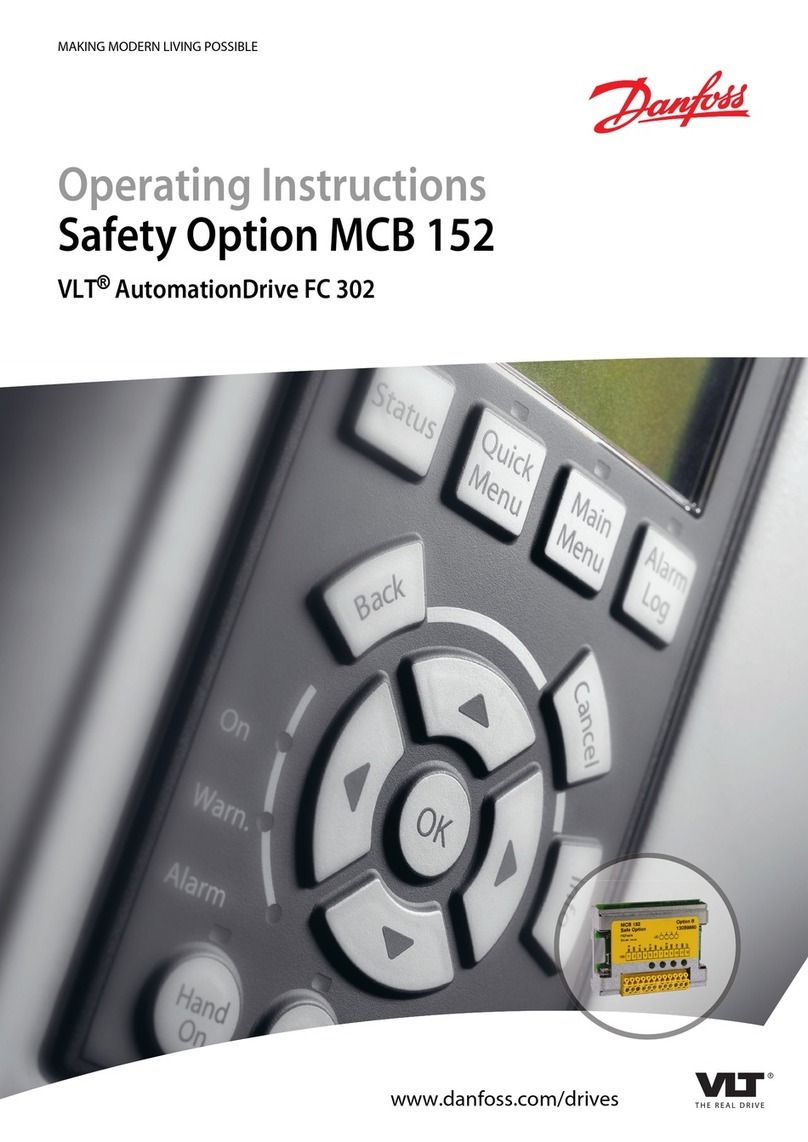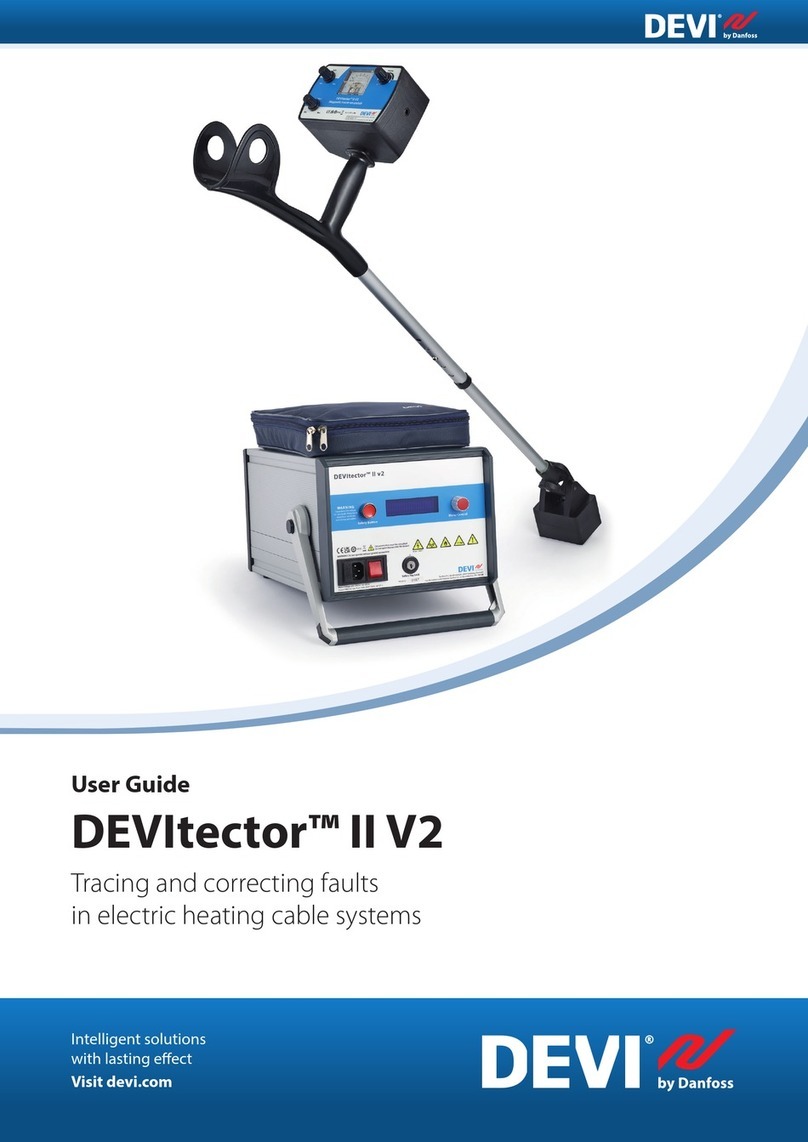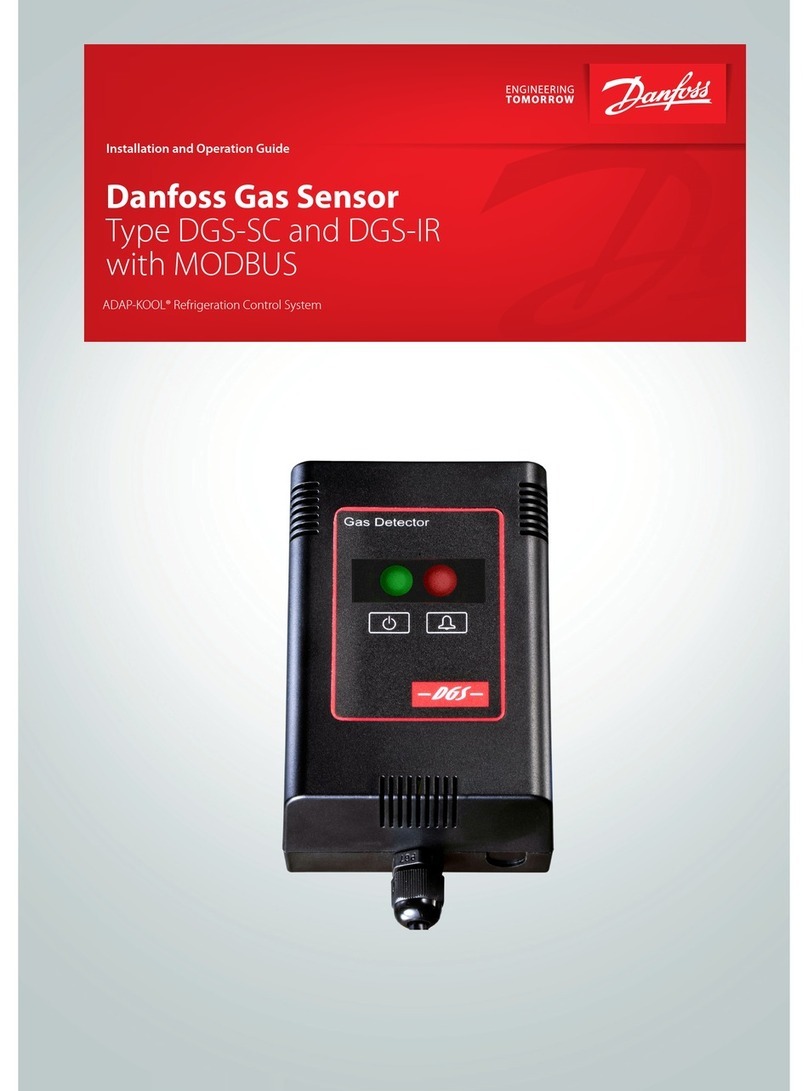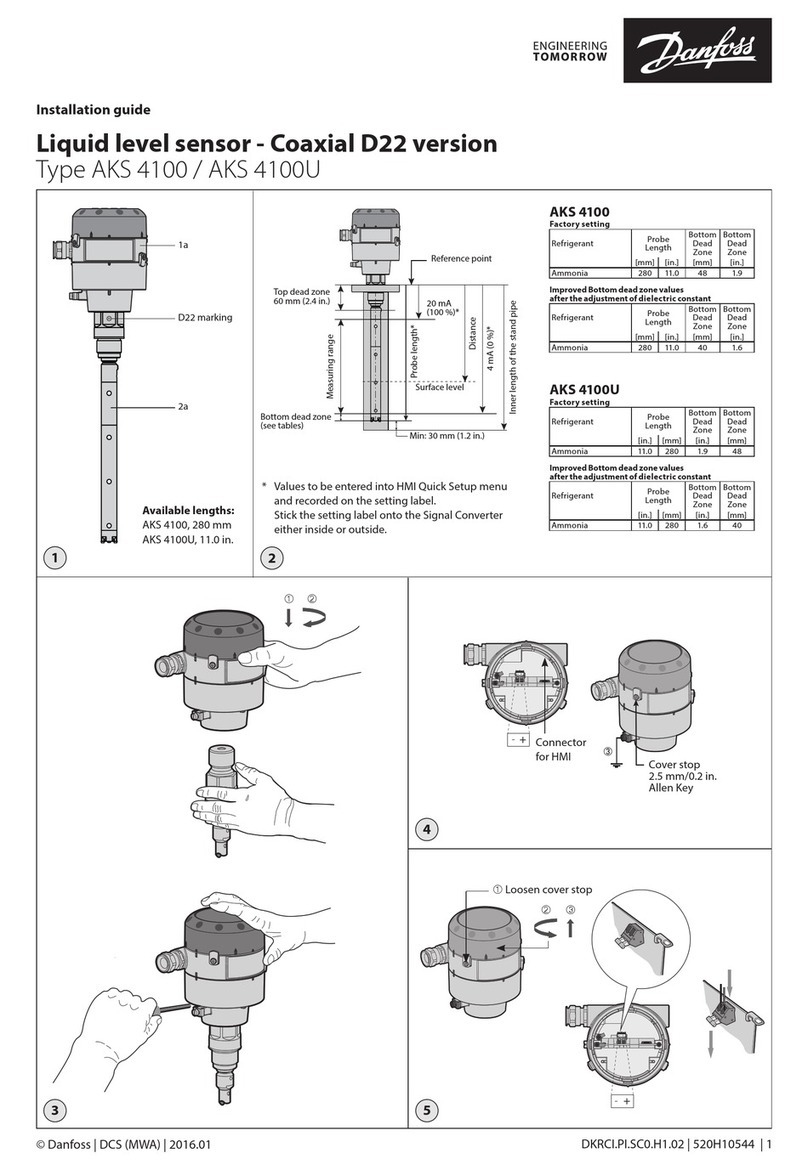
2 Legal Information and Safety
2.1 Legal Information
According to the Machinery Directive regulation, it is
hereby stated that the original language of these
Operating Instructions is English UK.
2.1.1 Copyright and Revisions
This publication contains information proprietary to
Danfoss and is protected by Copyright laws of Denmark,
international treaties and most other countries. All
trademarks in this publication are property of the
respective companies. Danfoss and the Danfoss logotype
are trademarks of Danfoss A/S. All rights reserved.
Although Danfoss has tested and reviewed the correctness,
completeness and documentation of this publication,
Danfoss makes no warranty or representation, neither
express or implied, with respect to this publication,
including but not limited to its quality, correctness,
completeness, performance, or fitness for a particular
purpose.
Danfoss reserves the right to revise, update and change
this publication at any time without prior notice or specific
obligation to inform former or present users of such
revisions or changes.
2.1.2 Warranty and Liability
All claims to warranty and liability are rendered invalid if
•the product was used contrary to the purpose for
which it is intended.
•damage can be attributed to not having followed
the guidelines in the manual.
•operating personnel are not suitably qualified.
•any type of modification has been made (e.g.
exchanging components on the PCB boards,
soldering work etc.).
2.2 Safety
2.2.1 Safety Precautions
WARNING
HIGH VOLTAGE!
Frequency converters contain high voltage when
connected to AC mains input power. Installation, start
up, and maintenance should be performed by qualified
personnel only. Failure to perform installation, start up,
and maintenance by qualified personnel could result in
death or serious injury.
WARNING
UNINTENDED START!
When the frequency converter is connected to AC mains,
the motor may start at any time. The frequency
converter, motor, and any driven equipment must be in
operational readiness. Failure to be in operational
readiness when the frequency converter is connected to
AC mains could result in death, serious injury,
equipment, or property damage.
CAUTION
This option is suitable for performing mechanical work
on the frequency converter system or affected area of a
machine only. It does NOT provide electrical safety. This
option should NOT be used as a control for starting
and/or stopping the frequency converter. See the
requirements for those applications in ISO 12100.
2.2.2 Risk Assessment
CAUTION
The safety option is intended to be part of the safety-
related control system of a machine. Before installation,
a risk assessment shall be performed to determine
whether the specifications of this safety option are
suitable for all foreseeable operational and environ-
mental characteristics for the system in which it will be
installed.
The system user is responsible for
•the set-up, safety rating and validation of any
sensors or actuators connected to the system.
•completing a system-level risk assessment and
reassessing the system any time a change is
made.
Legal Information and Safet... Operating Instructions
8 Danfoss A/S © Rev. 2014-02-11 All rights reserved. MG34W302
22































